Ten Plagues Sensory Bin
Ready for a super fun ten plagues sensory bin? When you’re done, check out our splitting the sea Passover sensory bin too! This post contains affiliate links.
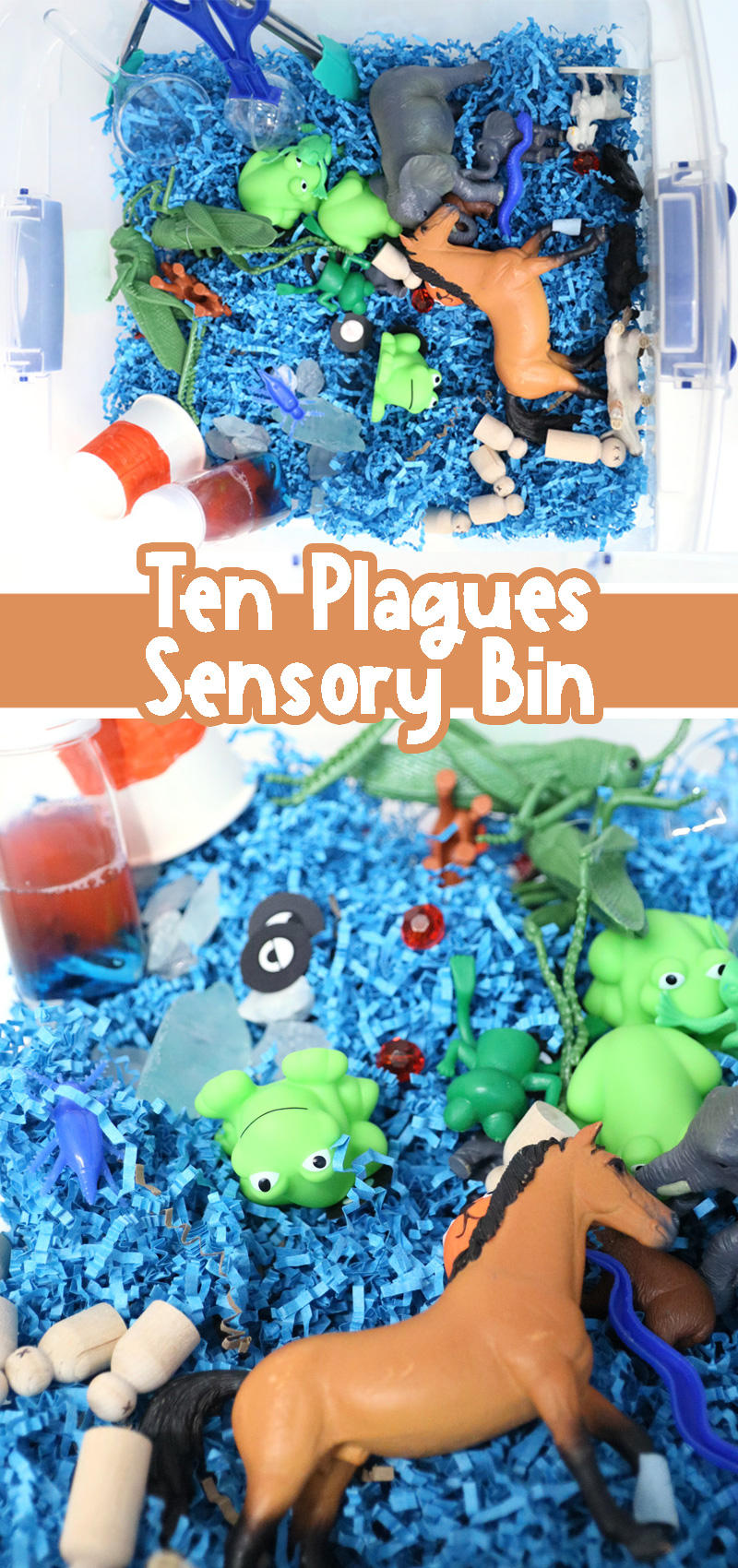
I’ve been wanting to make a ten plagues sensory bin for you for a while, but to be honest, it took some time to accumulate all the elements and so it had to be pushed off.
To make it easier for you, I’m going to share with you links that might make sense to purchase only if you’re doing this as a group or as a recurrent classroom toy. For home use, it can get pricey. However, I do share some alternate ideas when I can.
I’m also going to share with you another fun way you can create a ten plagues sensory bin on a budget using a fun printable I created. I did NOT stage it (I simply forgot and had to move on with this post) but it’s pretty straightforward.
The idea of this sensory bin is to allow for hands-on exploration of the different plagues, and to teach about it in a more tactile way.
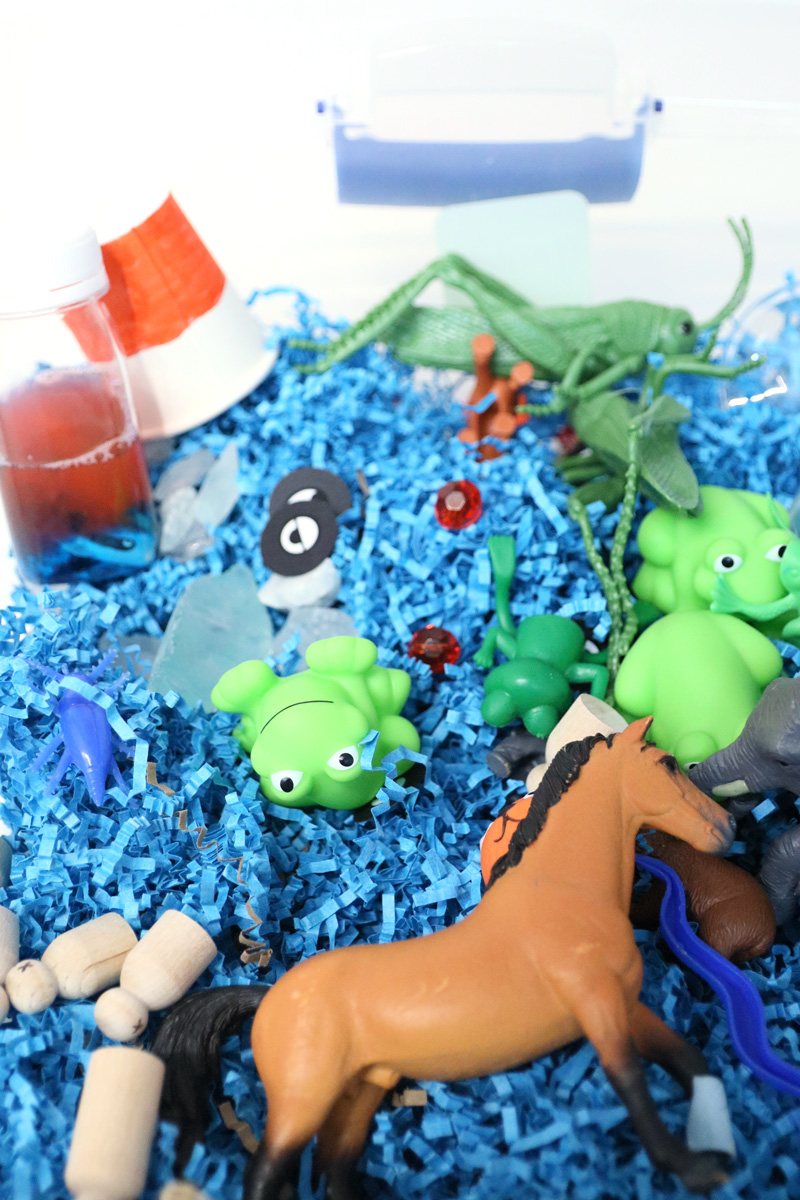
The Base & Tools
To start, you need a container. This can be any size, but flatter works better. An underbed box is fabulous for a small group of 2-4 kids. A shoebox can work for one. A 15 quart box, like I used, is great for two siblings to share.
Fill it with any sensory bin filler. Kinetic sand is fun. I used shredded paper from the dollar store. Water beads/Orbeez can be cool too, as long as you’re not doing it with toddlers. You can use water if everything inside is sealed and waterproof. And if you’re not concerned about Chametz you can even use dry pasta. You can probably even use rice or beans, even if you’re not Sephardic, because you’re not eating it (ask your LOR).
To theme the filler, I used blue shredded paper, just to serve as a “sky and water” type of scene-setter.

Then, you’ll want some play tools. I actually included a few themed ideas with the actual list of plagues, but some more ideas can include:
- Old formula and similar scoops
- Baking scoops, measuring cups
- Tongs and “bug catchers“
- Jumbo tweezers
- Cups
The Ten Plagues Sensory Bin using Printables
I’m going to outline toy-type options, as well as DIY ideas below, but first, I wanted to share with you the economical version: the printable plagues.
Over the years, I’ve twice designed printable plagues. The first was as puppets. You can simply place the puppets in the sensory bin as your plague, and a way to upgrade the craft.
The second time, I created round “discs” so that they can be used in different ways and have a cohesive look. The advantage of using these is that you can glue them back to back to make them two-sided.
Whichever one you use, I do recommend hard laminating them so that they don’t get smooshed in your bin.
The Ten Plagues Sensory Bin Using toys
The benefit of using toys and props in your ten plagues sensory bin is that it really offers much more of a multi-textured experience. It’s more three dimensional, and kids are more likely to play with the elements and interact more.
Buying these individually can get pricey. I recommend it if you have most of it at home, are creating large bins for a group, or will reuse most or all of the elements after. You can also get a simple ten plagues toy kit (here’s another great option) and use that in a sensory bin, with some supplementation if you want.
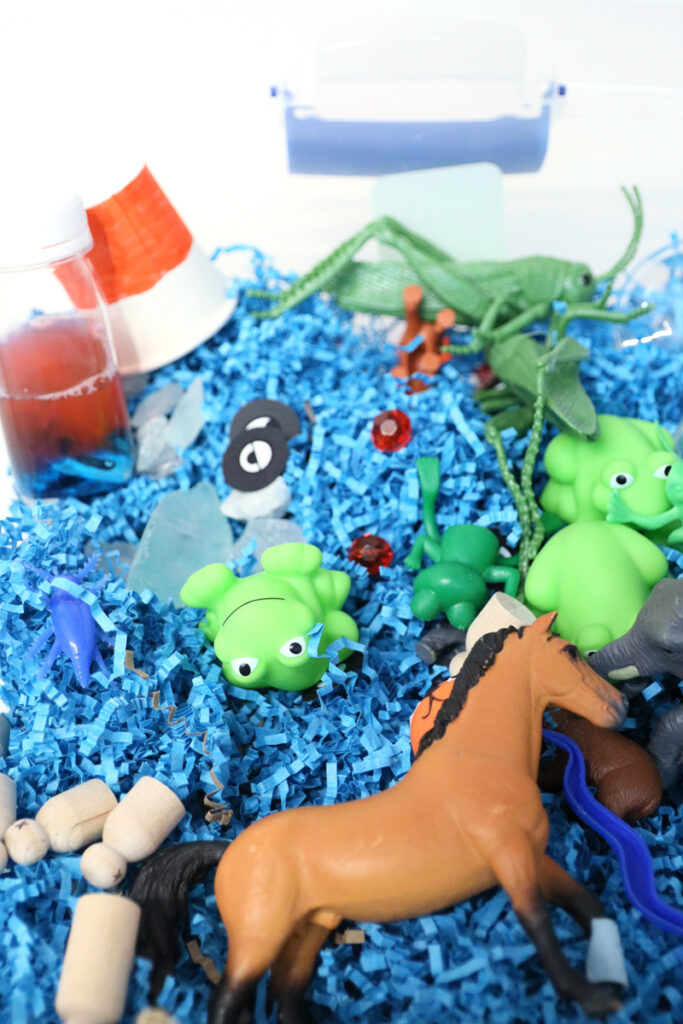
Overview of the toys and props
Here’s a quick rundown of what you can place inside – including some ideas that I didn’t necessarily use. I do go further in depth on those that I did below.
- Blood: Cup with red blood drawn on OR red crystals OR mini sensory bottle with Dawn dish soap, red colored water, toy fish.
- Frogs: toy frogs – bath toys, jumping frogs, etc.
- Lice: toy insects
- Wild animals: toy safari and zoo animals
- Pestilence: toy livestock (you can mark x on the eyes – or not)
- Boils – tongs with hands with boils drawn on, OR a sticky hand and draw on boils OR red crystals
- Ice and fire – sea glass – you can add fire if want with Sharpies
- Grasshoppers – toy grasshoppers
- Darkness – sunglasses or googly eyes/stickers on black paper. I used the second option, but the first might give kids more play value.
- Firstborn: peg dolls wtih x eyes. If it’s too scary, you can focus on Pharaoh saying “go” by including toy pajamas (like from a Barbie or similar doll) or PJ’s cut from felt.
Diving Deeper into each plague
Keep in mind that opinions vary on exactly what each plague was. I stuck to the classic Orthodox tradition, however, you can adapt it to your needs.
Dam – blood
I had originally found red (plastic) crystal beads to use for blood. However, I stole them for boils.
So I played with two ideas. On one, I took a small paper cup (about 5 oz.) I had handy and literally just drew on some red “blood” as if I’d had a cup of water that turned to blood.

Then, I played with a mini sensory bottle idea. The cool thing about having this type of element in a sensory bin is that it really makes for so many more exploration opportunities. This one doubles as a science experiement.
I put some blue Dawn dish soap at the bottom of a small juice bottle (you can upcycle a bottle or small jar, of course). I added a plastic toy fish. And then I poured in some red-colored water. This gives the “water turned blood” effect. Of COURSE you’ll want to glue it shut.
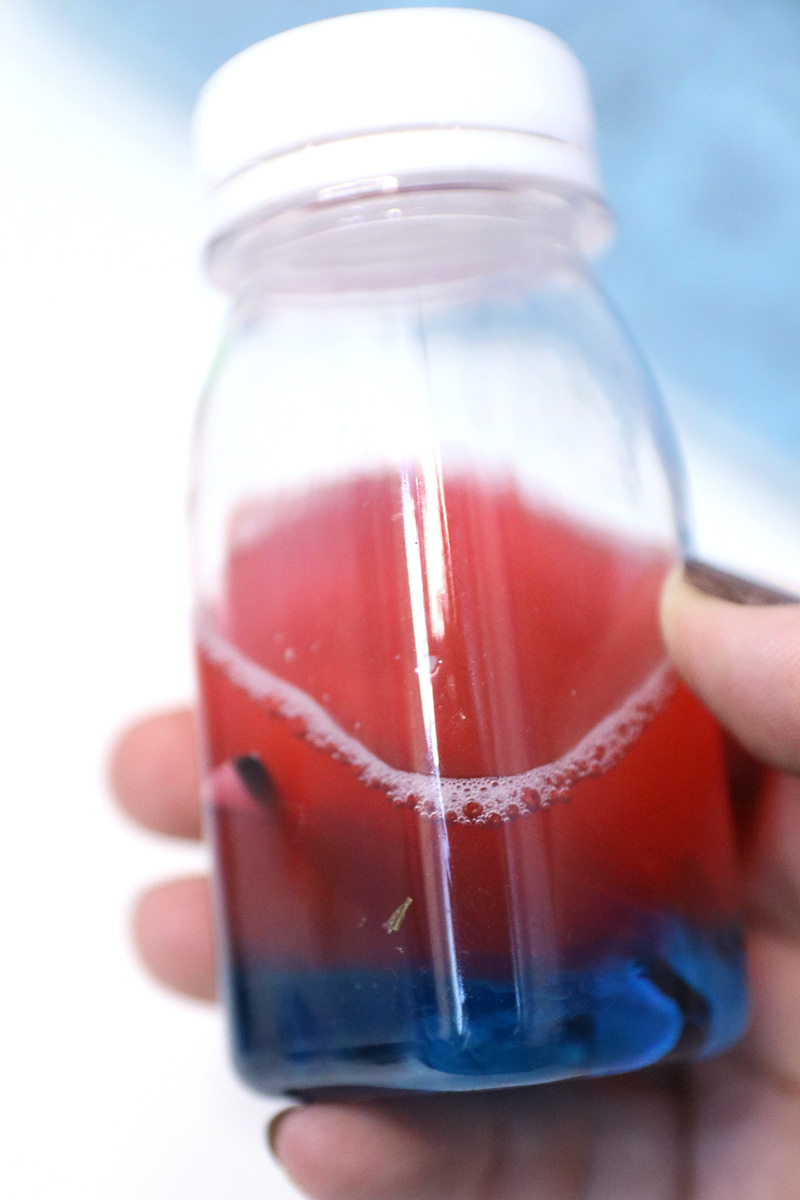
I put both options in my ten plagues sensory bin.
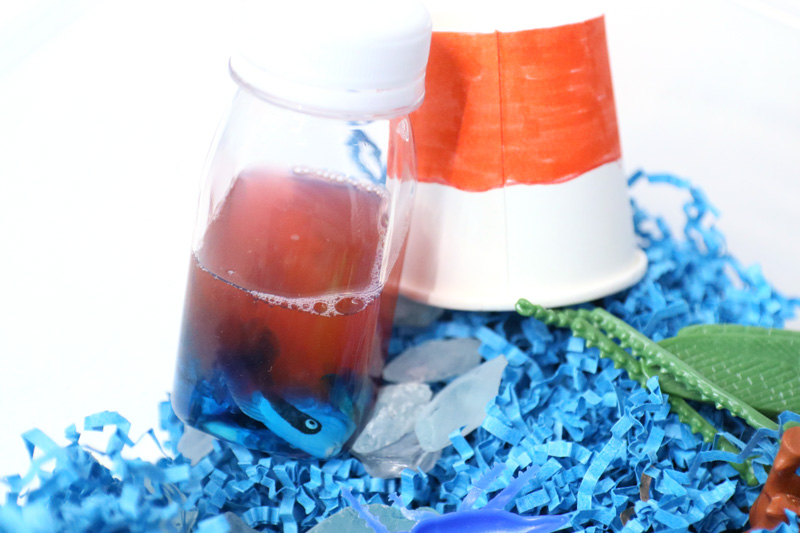
Tzefardei’a – frogs
Frogs is an easy one. I did find a three pack of bath toy frogs at the dollar store, but I also had some accumulated toy frogs in our toy box.

Kinim – lice
We were a little sparse with the lice, due to availability and my reluctance to spend too much on this for my kids to use… so we stuck with a single louse. What a plague!
You’ll definitely want to get more – any plastic insect can really pass as lice.
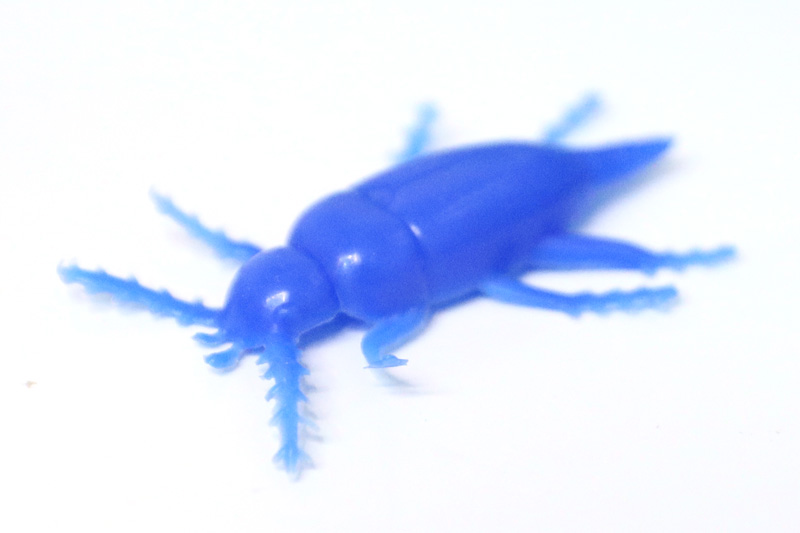
Arov – wild animals
Another easy one, we simply collected a good assortment of plastic animals from the toy box to use as wild animals. The kids helped… although I’m having a hard time calling those adorable baby elephants a plague.
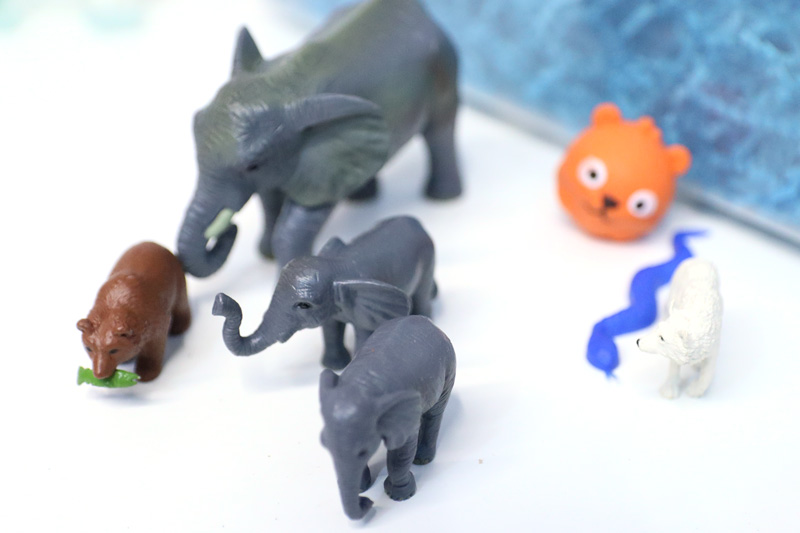
Dever – pestilence
For pestilence all you need is some livestock – and lie them on their sides. You can try the whole x-eye dead effect, but for me sick animals is enough.
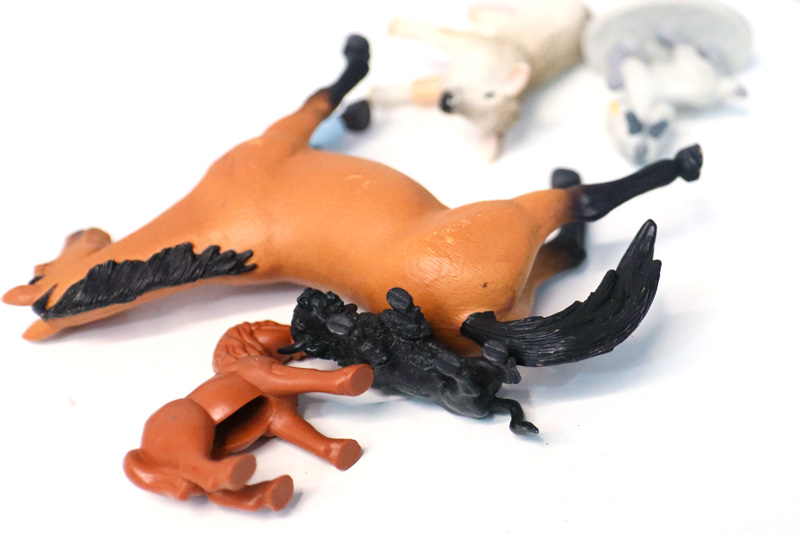
Ironically, some of the wild animals may catch the pestilence too…
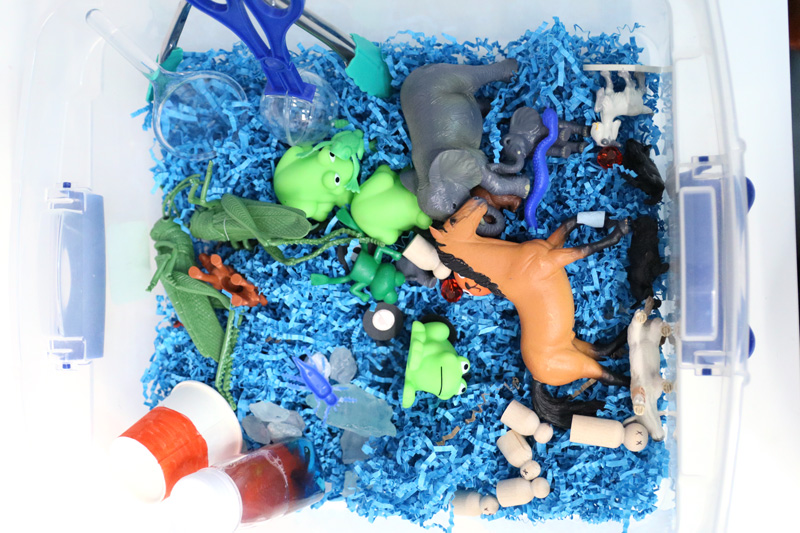
Sh’chin – boils
My first way tot do boils was to add felt “hands” to our tongs and draw on “boils”.
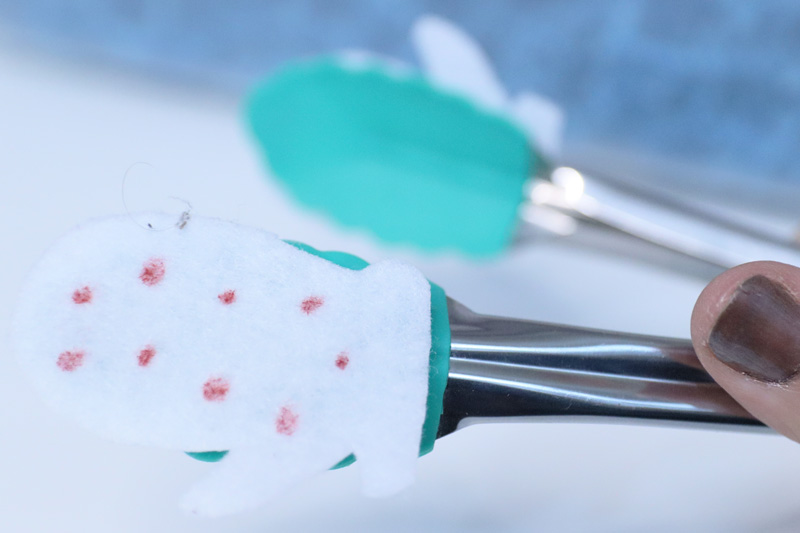
But then I decided to steal the beads I had taken for “blood” and use them as boils instead. The tongs were used without hands attached.

Barad – hail – ice and fire
For hailstones, I found the perfect blue and white mix of sea glass that just looks so icey! You CAN draw fire in the centers with permanent markers, however, I didn’t. I’ll be repurposing these in non-hailstone crafts.
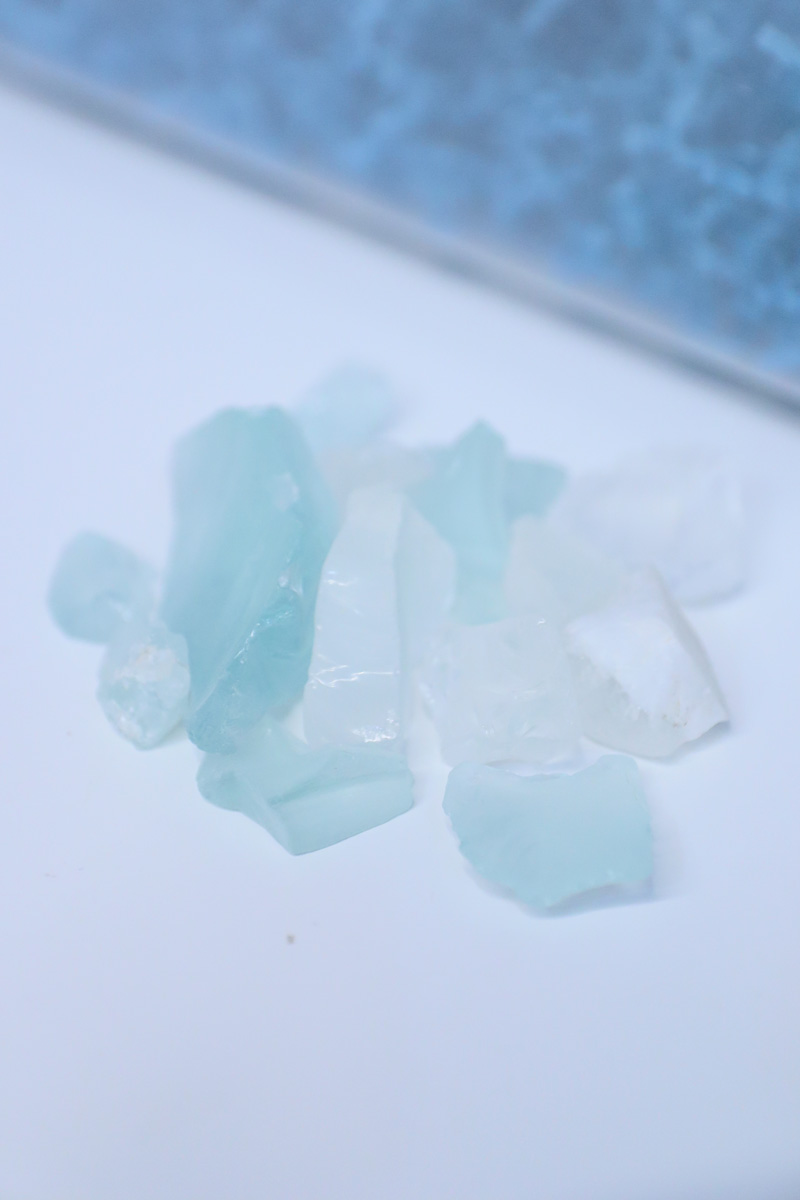
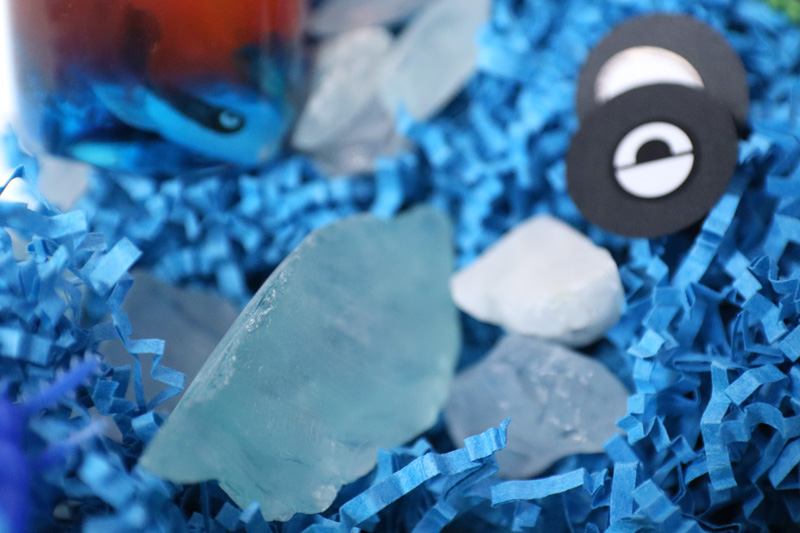
Arbeh – locust
These jumbo grasshoppers from the dollar store were a must for this ten plagues sensory bin. When we’re done with it, it’ll go with the other toy animals for my kids to play with.
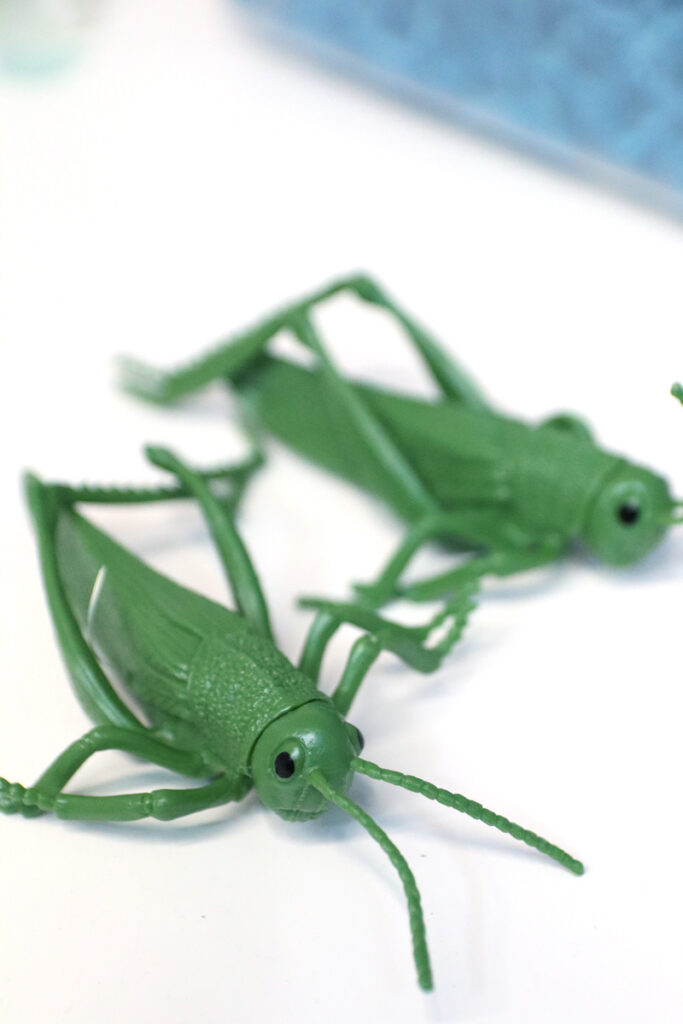
Choshech – darkness
I got a little creative with darkness. I punched holes from black cardstock using a one-inch hole punch. I stuck on eye stickers. I maybe should have laminated them, but for now I made it as a one-time activity so minimal effort was kind of key.
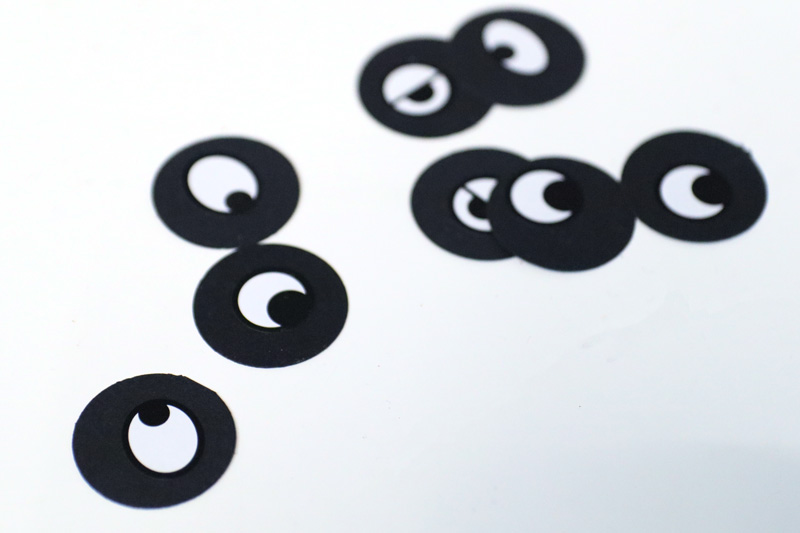
Makkat Bechorot – plague of the firstborn
And finally, for the death of the firstborn, I took some unfinished peg dolls and made X’s for eyes. For younger kids, I’d probably just make them closed and say they’re sick.

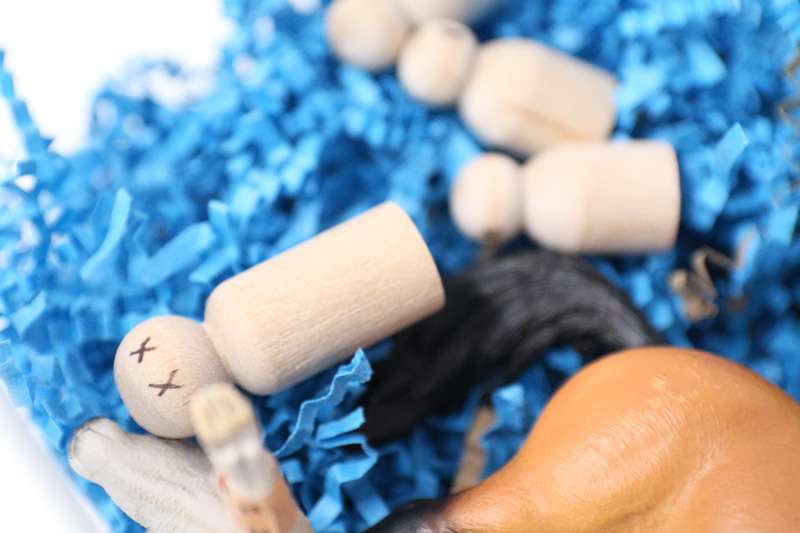
I hope you enjoyed these ten plague sensory bin ideas! Got any to add to the list? Comment below!




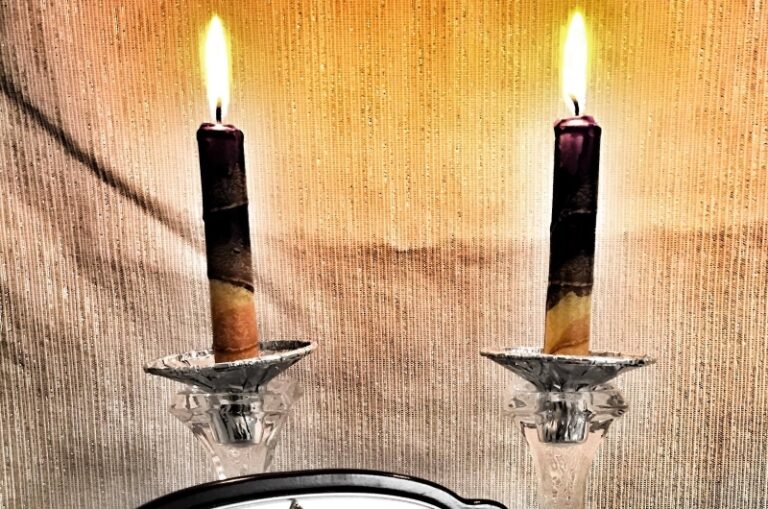
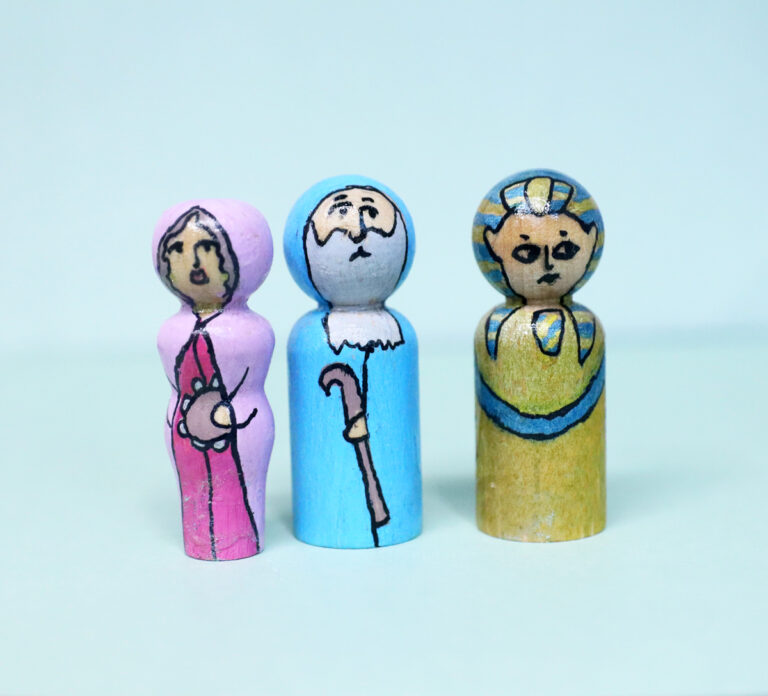
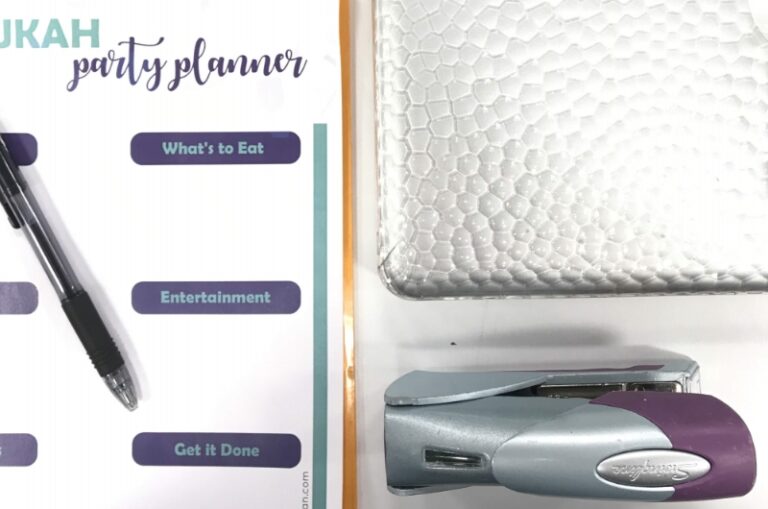
Using sea or lake glass for בָּרָד
is brilliant! Did you know we
use the same word for a snow cone
or slushie?
I had actually known that – and forgot! Thanks for the reminder 🙂